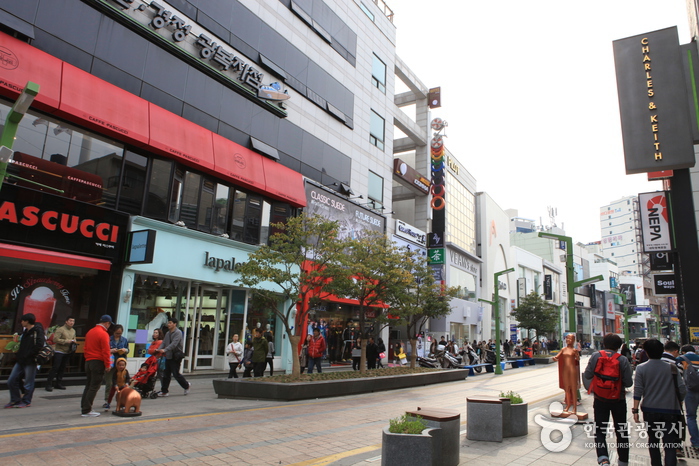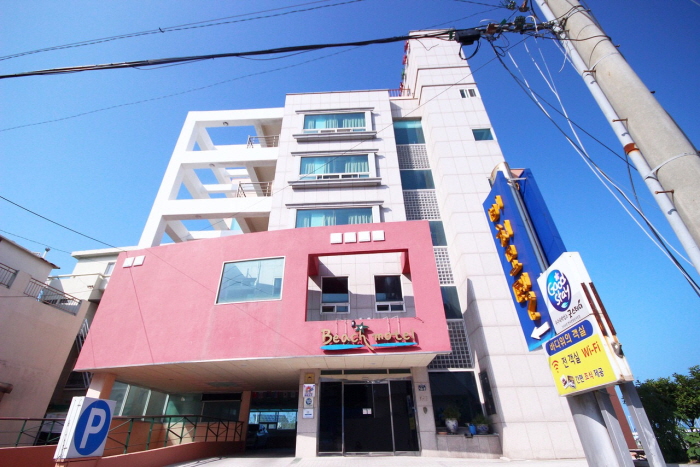Olive Young - Busan Nampo Branch [Tax Refund Shop] (올리브영 부산남포)
9.1Km 2024-04-17
64-1, Gwangbok-ro, Jung-gu, Busan
-
Dolgorae Sundubu (돌고래순두부)
9.1Km 2024-03-15
15, Junggu-ro 40beon-gil, Jung-gu, Busan
+82-51-246-1825
Dolgorae Sundubu is a restaurant in Gukje Market that serves sundubu jjigae (soft bean curd jjigae). It has quite a tradition, dating back to 1982, and still draws lines of visitors at mealtime thanks to its reputation. Sundubu baekban (soft bean curd set menu), comprised of fresh and gentle sundubu jjigae (soft bean curd jjigae) and Jeolla-style side dishes and kimchi, is delicious and nicely presented.
Yeongdodaegyo Bridge (영도대교)
9.1Km 2023-04-22
46, Taejong-ro, Yeongdo-gu, Busan
+82-1670-8114
Yeongdodaegyo Bridge, connecting Nampo-dong and Yeongdo Island, was the first bridge to connect the mainland to one of the nearby islands in Busan. The bridge lifted to allow ships to pass between the south and north ports, and made a passage for ships anywhere from two to seven times in one day. When the bridge was first constructed, many people would gather to watch the strange spectacle of a bridge rising up to point to the sky. The bridge remains a famous landmark of Busan even to this day.
Guess - Gwangbok Branch [Tax Refund Shop] (게스 광복)
9.1Km 2024-04-16
5, Gwangbokjungang-ro, Jung-gu, Busan
-
Venus - Gwangbok Branch [Tax Refund Shop] (비너스 광복)
9.2Km 2024-04-23
1, Gwangbok-ro 55beon-gil, Jung-gu, Busan
-
Gwangbok-dong Cultural & Fashion Street (광복로문화패션거리)
9.2Km 2024-03-06
Gwangbok-ro, Jung-gu, Busan
+82-51-253-8253
Gwangbok-dong Cultural & Fashion Street is about 600 m long from the entrance to Gukje Market. The street has historically featured many clothing shops, and it is quite crowded at night or on weekends. Every December, the area also hosts the Busan Christmas Tree Cultural Festival, which turns the street into a pedestrian-only area. There are plenty of good restaurants in the area, which is a great place to feel the vitality and energy of Busan’s youth.
Ai Hasi - Busan Gukje Market Branch [Tax Refund Shop] (아이하시 부산국제시장)
9.2Km 2024-04-18
1F, Bldg. A of Ihasi, 33, Gukjesijang 2-gil, Jung-gu, Busan
-
Halmae Gaya Milmyeon (할매가야밀면)
9.2Km 2024-03-20
56-14, Gwangbok-ro, Jung-gu, Busan
+82-51-246-3314
Halmae Gaya Milmyeon is a restaurant near BIFF Square that serves milmyeon (wheat noodles). Milmyeon (wheat noodles), a folk dish of Busan, refers to noodles made with starch and flour. The yellowish noodles are chewy and plain in taste, perfect as accompaniments to the chilled clear soup with a sheet of ice on top. Nearby tourist sites include Gukje Market and Jagalchi Market.
Beach Motel (비치모텔)
9.2Km 2025-04-18
10-9 , Harihaean-gil, Yeongdo-gu, Busan
+82-51-405-3331, +82-10-2951-7230
The Beach Motel stands on the beach about 8 km from Busan Station. Aside from the five family rooms, all rooms have a sea view. Bread, coffee, and eggs are provided for breakfast, while water and coffee are always available in the first floor lobby. There is a coffee pot in each room, plus bottled water and a microwave on every floor, so guests can prepare a simple meal. A laundry service is provided. From this location Busan Harbor Bridge gets you to Haeundae, while other nearby tourist attractions include Igidae Coastal Park, Songdo Beach, and Sinseondae Cliff.
Gukje Market (국제시장)
9.2Km 2025-10-23
Area of Sinchang-ro 4-ga, Jung-gu, Busan
+82-51-245-7389
The current marketplace of Gukje Market first formed after the liberation of Korea from the Japanese administration when people gathered to trade overseas products left by the Japanese and brought in by Koreans who came back from abroad. Following the Korean War, refugees who fled to Busan set up stalls in order to make a living by selling smuggled or imported products, which developed into Gukje Market (gukje meaning "international" in Korean) of today. Gukje Market is one of Korea’s largest markets and a testament to Korea's modern history. The market is divided into two wings, and first-timers to the market are advised to be careful not to get lost in the maze-like alleys and halls.
![Olive Young - Busan Nampo Branch [Tax Refund Shop] (올리브영 부산남포)](http://tong.visitkorea.or.kr/cms/resource/56/2885856_image2_1.jpg)

![Guess - Gwangbok Branch [Tax Refund Shop] (게스 광복)](http://tong.visitkorea.or.kr/cms/resource/94/2885794_image2_1.jpg)
![Venus - Gwangbok Branch [Tax Refund Shop] (비너스 광복)](http://tong.visitkorea.or.kr/cms/resource/04/2888704_image2_1.jpg)

![Ai Hasi - Busan Gukje Market Branch [Tax Refund Shop] (아이하시 부산국제시장)](http://tong.visitkorea.or.kr/cms/resource/11/2889711_image2_1.jpg)


 English
English
 한국어
한국어 日本語
日本語 中文(简体)
中文(简体) Deutsch
Deutsch Français
Français Español
Español Русский
Русский